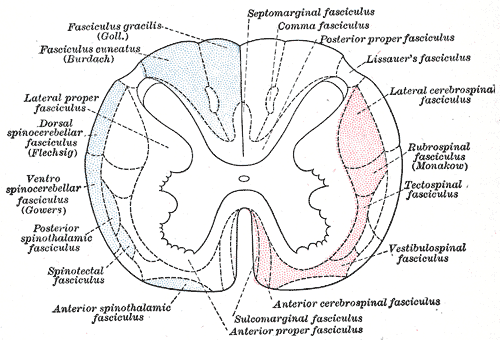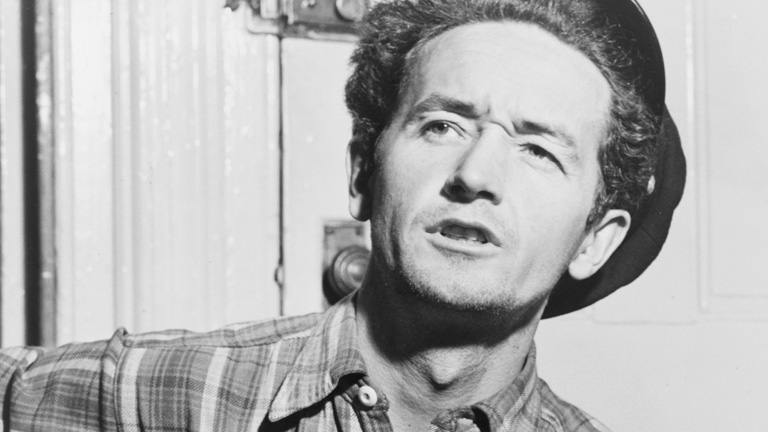2017-11-05 08:21:08
Prelude (6:09)
Today's Topics
- Wrap up on pain
- The neuroscience of action
The Real Reason for Brains
The neuroscience of action
- What types of actions are there?
- How are they produced?
- By the muscles
- By the nervous system
Nervous system "output" includes
- Movements
- Autonomic responses
- Endocrine responses
Types of actions
Types of actions
- Reflexes
- Simple, highly stereotyped, unlearned, rapid
- vs. planned or voluntary actions
- Complex, flexible, acquired, slower
- Discrete (reaching) vs. rhythmic (walking)
- Ballistic (no feedback) vs. controlled (feedback)
Multiple, parallel controllers
Key "nodes" in network
- Primary motor cortex (M1)
- Non-primary motor cortex
- Basal ganglia
- Brain stem
- Cerebellum
- Spinal cord
Muscle classes
- Axial
- Trunk, neck, hips
- Proximal
- Shoulder/elbow, pelvis/knee
- Distal
- Hands/fingers, feet/toes
Muscles

Muscle types
- Smooth
- Arteries, hair follicles, uterus, intestines
- Regulated by ANS (involuntary)
- Striated (striped)
- Skeletal
- Voluntary control, mostly connected to tendons and bones
- Cardiac
Muscle types
How skeletal muscles contract
- Motor neuron soma located in ventral horn of spinal cord
- 'motor unit' = one motor neuron + all muscle fibers it connects with
- Motor neurons create specialized synapse = neuromuscular junction
- Releases ACh
From spinal cord to muscle
How skeletal muscles contract
- Nicotinic ACh receptor (nAChR) binds ACh
- Nicotine also binds to this receptor
- nAChR's found in muscle (also in ANS and CNS)
- Rate of motor neuron firing ~ force produced ('rate coding')
nAChR activation produces excitatory endplate potential
- Na+ influx/K+ efflux
- Muscle fibers depolarize
- Depolarization spreads along fibers like an action potential
- Intramuscular stores release Ca++
Motor endplate
How skeletal muscles contract
- Myofibrils (w/in sarcomere)
- Actin & mysosin proteins
- “Molecular gears”
- Bind, move, unbind in presence of Ca++, ATP
Anatomy of muscle fibers
Anatomy of motor endplate
Muscle contraction
Agonist/antagonist muscle pairs
Meat preference?
Muscle fiber types
- Fast twitch/fatiguing
- Type II
- White meat
- Slow twitch/fatiguing
- Type I
- Red meat
Muscles are sensory organs, too!

Two muscle fiber types
Two muscle fiber types
- Intrafusal fibers
- Sense length/tension
- Contain muscle spindles linked to Ia afferents
- ennervated by gamma (\(\gamma\)) motor neurons
- Extrafusal fibers
- Generate force
- ennervated by alpha (\(\alpha\)) motor neurons
Monosynaptic stretch (myotatic) reflex
- Muscle stretched (length increases)
- Muscle spindle in intrafusal fiber activates
- Ia afferent sends signal to spinal cord
- Activates alpha (\(\alpha\)) motor neuron
- Muscle contracts, shortens length
Monosynaptic stetch (myotatic) reflex
- Gamma (\(\gamma\)) motor neuron fires to take up intrafusal fiber slack

Monosynaptic stretch (myotatic) reflex
Why doesn't antagonist muscle respond?
Why doesn't antagonist muscle respond?
- Polysynaptic inhibition of antagonist muscle
- Prevents/dampens tremor
Brain gets fast(est) sensory info from spindles
How the brain controls the muscles
- Pyramidal tracts
- Pyramidal cells (Cerebral Cortex Layer 5) in primary motor cortex (M1)
- Corticobulbar (cortex -> brainstem) tract
- Corticospinal (cortex -> spinal cord) tract
- Crossover (decussate) in medulla
- L side of brain ennervates R side of body
Corticospinal tract
How the brain controls the muscles
- Extrapyramidal system
- Tectospinal tract
- Vestibulospinal tract
- Reticulospinal tract
- Involuntary movements
- Posture, balance, arousal
Extrapyramidal system
Disorders
- Parkinson's
- Huntington's
The Faces of Parkinson's
Parkinson's
- Slow, absent movement, resting tremor
- Cognitive deficits, depression
- DA Neurons in substantia nigra degenerate
- Treatments
- DA agonists
- DA agonists linked to impulse control disorders in ~1/7 patients (Ramirez-Zamora et al. 2016)
- Levodopa (L-Dopa), DA precursor
Huntington's
Huntington's
- Formerly Huntington’s Chorea
- "Chorea" from Greek for "dance"
- “Dance-like” pattern of involuntary movements
- Cognitive decline
- Genetic + environmental influences
- Disturbance in striatum
- No effective treatment
Huntington's
Final thoughts
- Control of movement determined by multiple sources
- Cerebral cortex + basal ganglia + cerebellum + spinal circuits
Next time…
- Review for Exam 3
References
Ramirez-Zamora, Adolfo, Lucy Gee, James Boyd, and José Biller. 2016. “Treatment of Impulse Control Disorders in Parkinson’s Disease: Practical Considerations and Future Directions.” Expert Review of Neurotherapeutics 16 (4): 389–99. doi:10.1586/14737175.2016.1158103.





